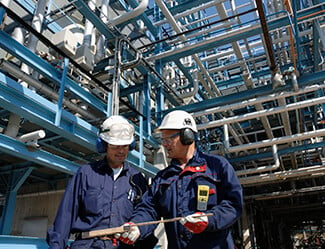Collaboration Aims to Improve Energy Production Safety
03
February,
2023
2 MINUTE READ

With a goal of enhancing coordination and communication as well as safety in domestic energy production, the U.S. Environmental Protection Agency sat down with states, tribes, businesses, and environmental groups to enhance coordination and promote responsible domestic production of oil and gas resources.
"This roundtable fulfills a commitment I made last year to improve EPA's working relationship with state regulators and American businesses," said EPA Administrator Scott Pruitt. "EPA is working closely with the states to provide clarity and certainty to oil and gas rules and permitting processes."
Strategic collaboration
Last year, various compliance concerns were raised by oil and gas industry associations in Colorado and North Dakota. Pruitt said he saw a need to enhance existing relationships, eliminate duplication, and implement joint-planning processes between EPA regional offices and their counterpart state regulatory agencies.
Working together to find practical solutions to regulatory, permitting and compliance challenges, the group envisions more effective and efficient environmental outcomes. EPA continues to engage with the oil and gas sector in a separate program and increase coordination and collaboration between the agency and stakeholders to achieve positive environmental outcomes. All groups involved called the meeting productive and that the opportunities to work together were welcomed.
"The roundtable was a great start for a continuing dialogue on the appropriate roles of states and the federal government in oil and gas regulation," said Mike Smith, executive director of the Interstate Oil and Gas Compact Commission.
 Domestic production of oil and gas resources can be challenging not only for the environment, but also for the workers. Fatalities in the oil and gas extraction industry typically result from struck-by, caught-in or caught-between hazards, according to the Occupational Safety and Health Administration. Moving vehicles or equipment, falling equipment and high-pressure lines all can set a scene for workplace injury for staff that sometimes must endure working in the heat as well as long shifts. Develop and implement safe practices for power sources, chemical handling, confined spaces, hot work, and other hazards in the oil and gas industry. Start with 10 Safety Tips for Oil and Gas Industry Workers. Learn how effective labeling and signage can help to address those hazards with a free oil and gas industry best practices guide.
Domestic production of oil and gas resources can be challenging not only for the environment, but also for the workers. Fatalities in the oil and gas extraction industry typically result from struck-by, caught-in or caught-between hazards, according to the Occupational Safety and Health Administration. Moving vehicles or equipment, falling equipment and high-pressure lines all can set a scene for workplace injury for staff that sometimes must endure working in the heat as well as long shifts. Develop and implement safe practices for power sources, chemical handling, confined spaces, hot work, and other hazards in the oil and gas industry. Start with 10 Safety Tips for Oil and Gas Industry Workers. Learn how effective labeling and signage can help to address those hazards with a free oil and gas industry best practices guide.
Fuel Safety Programs
Duralabel has the visual communication solutions and resources to help with safety vigilance at any oil and gas extraction site. Execute a safer oil and gas extraction operation using effective visual communication. Provide a durable grip on wet floors, on elevated platforms, and other slippery surfaces to prevent slips and falls using PathFinder TREAD (anti-slip) floor tape. Get the job done easily and quickly with industrial safety labeling products such as a DuraLabel Kodiak multi-color sign printer, oily surface label supply, premade safety signs, and full line of safety solutions by Duralabel.
RELATED RESOURCES

New NIOSH App's Got Your Back
Workers can now use safe, proper lifting techniques through a cell phone program that helps its user assess a ...
Read
Report: Struck-by Hazards Lead Cause of Fatal/Nonfatal Injuries
Between 2011 and 2015, struck-by injuries increased 2.5 percent, according to The Center for Construction ...
Read
Report Calls On Agencies to Create ?Smarter? Injury Surveillance
Coordination and data sharing needs to be strengthened across state and federal agencies, according to a ...
Read.png)


